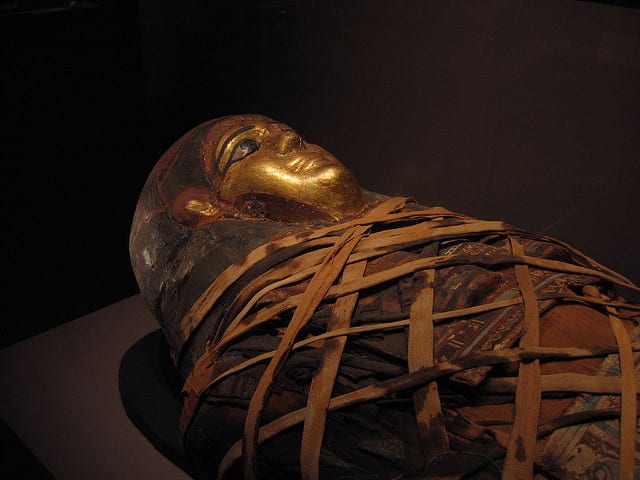
Two weeks ago, the discovery by Egyptian construction workers of an ancient sarcophagus attracted international media attention. But who is likely—or unlikely—to be its owner?
The 30-ton sealed granite sarcophagus, believed to be more than 2,000 years old, has prompted speculation online about its occupant. It has also drawn plenty of (questionable) mummy jokes about the curse it may unleash were it to be opened.
Egyptian officials at the Ministry of Antiquities are being inundated with global press enquires regarding when and how the stone coffin will be unsealed. And so far they have (understandably) refused to speculate whom its occupant might be.
However, local archaeologists have been able to narrow down whom the coffin does not belong to.
The official report of the discovery, released in Egypt’s state-run newspaper Al Ahram, was unambiguous enough: A large stone sarcophagus—still sealed—was uncovered during a construction survey in the city of Alexandria on Egypt’s Mediterranean coast. A worn alabaster head of a man, possibly the coffin’s occupant, was found nearby, and the burial site was believed to date from the Ptolemaic period (ca. 323-30 B.C.).
According to an official statement, the nearly nine-foot-long, five-foot-wide sarcophagus is the largest ancient coffin ever discovered in the city. This fact has sparked speculation that it may belong to a powerful or wealthy person—perhaps even Alexander the Great, who founded his namesake city in 331 B.C.
Two anonymous archaeologists, speaking to the National Geographic, suspect that the sarcophagus itself may date to an earlier pharaonic dynasty in Egypt’s long history, due in part to its unusually large proportions.
One of the archaeologists believes the burial of the sarcophagus may date back to the Roman period, which follows the Ptolemaic period, based on its “high” elevation (the sarcophagus was uncovered just 15 feet below the modern street surface).
This archaeologist further dispels rumors that Alexander the Great may be inside the coffin because the burial site is outside the boundaries of ancient Alexandria, making it highly unlikely an ancient Egyptian royal was buried there.
The other archaeologist believes that, since Alexandria wasn’t even founded until the fourth century B.C., the massive sarcophagus may have been brought to the city empty, from an earlier, dynastic-period site down the Nile—such as Memphis—and then re-used to bury someone in later years.
What, however, we do know is that opening the giant sarcophagus will be an impressive feat: the granite stone coffin is estimated to weigh some 30 tons.
In an interview with Egypt Today, Waad Abdul-Elar, head of the projects sector at the Ministry of Antiquities suggested two methods to extract the find. One involved surrounding the sarcophagus with protective fill dirt and then lifting the entire mass out of the pit via bulldozer; the other involved opening the coffin in place and then removing the lid and base separately via a hoist.
Much to the disappointment of the Twittersphere, there has been no news yet of plans to live stream the opening of the coffin on social media.














